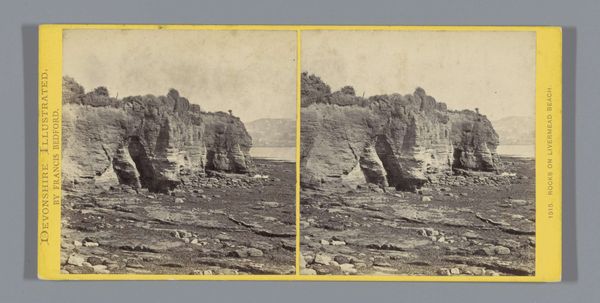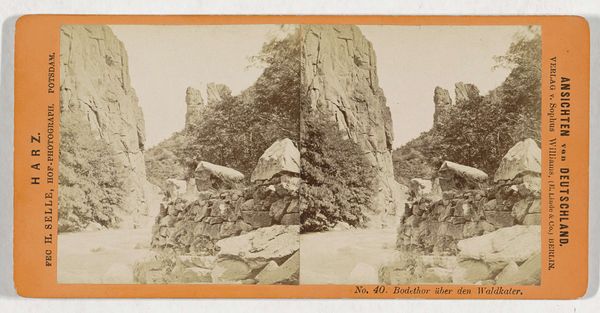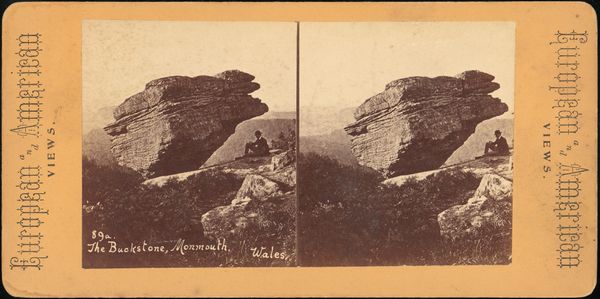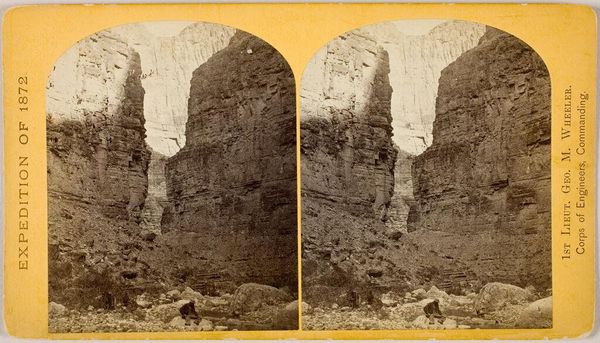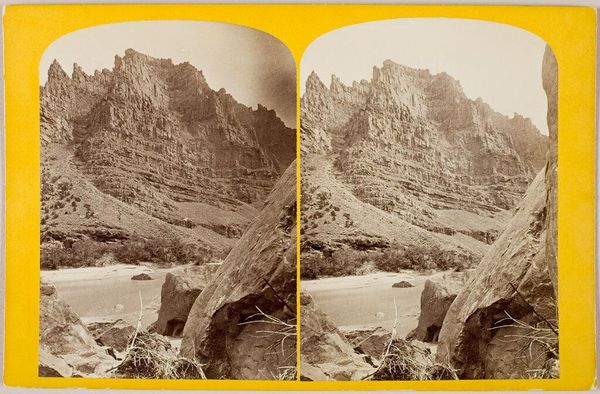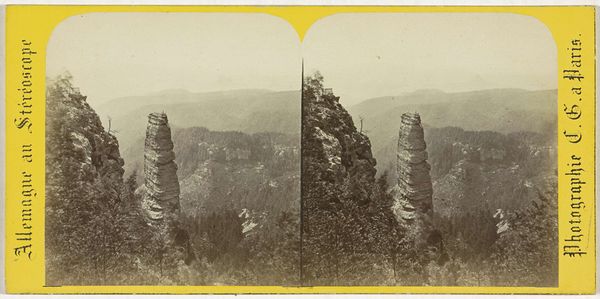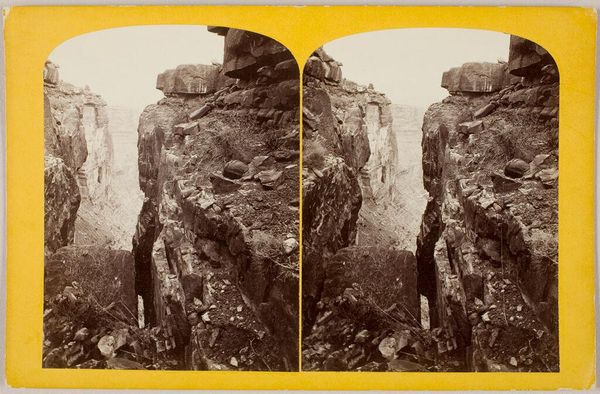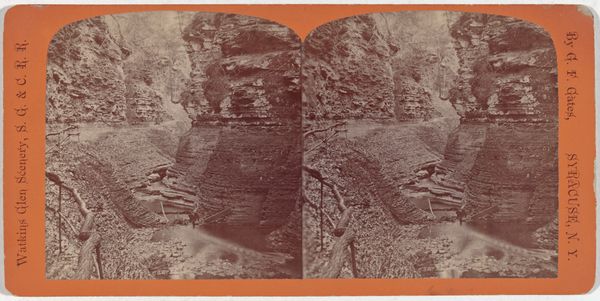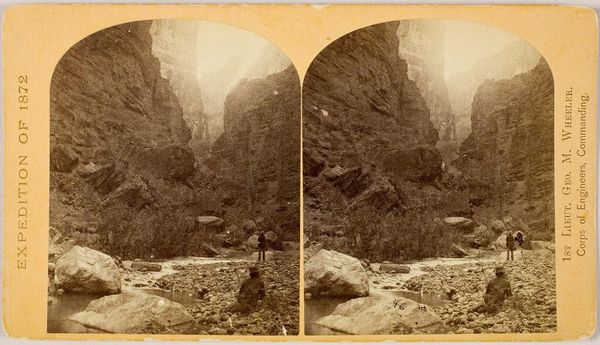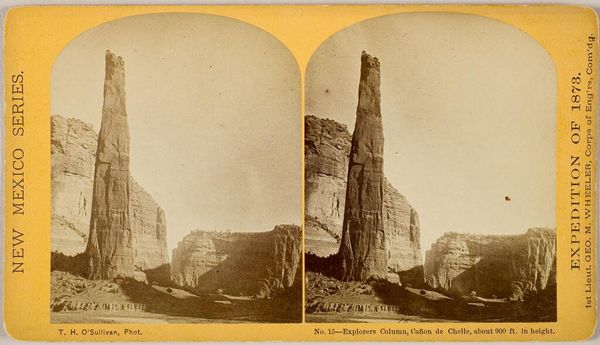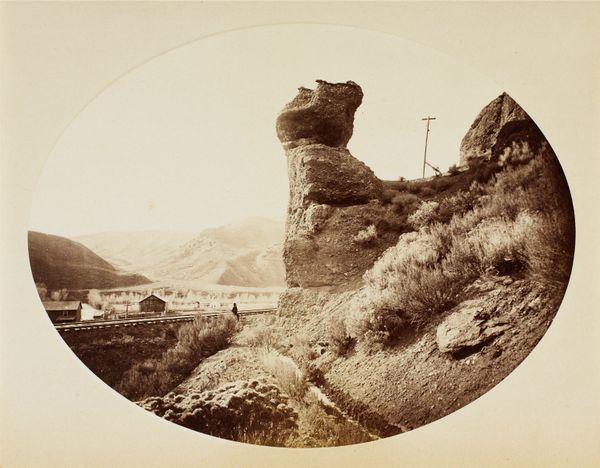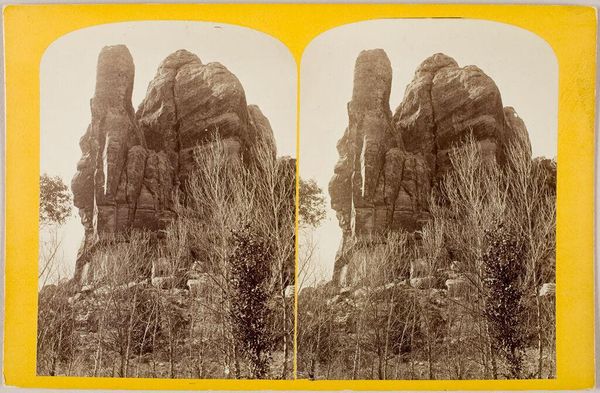![[Group of 11 Early Stereograph Views of British Landscapes] by Westley's Cheltenham Library](/_next/image?url=https%3A%2F%2Fd2w8kbdekdi1gv.cloudfront.net%2FeyJidWNrZXQiOiAiYXJ0ZXJhLWltYWdlcy1idWNrZXQiLCAia2V5IjogImFydHdvcmtzL2I3NjA5YjBmLWVlODgtNDAyYS1iMTc2LWRkOWFlMTZlZGY0Mi9iNzYwOWIwZi1lZTg4LTQwMmEtYjE3Ni1kZDlhZTE2ZWRmNDJfZnVsbC5qcGciLCAiZWRpdHMiOiB7InJlc2l6ZSI6IHsid2lkdGgiOiAxOTIwLCAiaGVpZ2h0IjogMTkyMCwgImZpdCI6ICJpbnNpZGUifX19&w=3840&q=75)
[Group of 11 Early Stereograph Views of British Landscapes] 1850 - 1929
0:00
0:00
photography, gelatin-silver-print
#
pictorialism
#
landscape
#
photography
#
gelatin-silver-print
Dimensions: Mounts approximately: 8.4 x 17 cm (3 5/16 x 6 11/16 in.) to 8.5 x 17.5 cm (3 3/8 x 6 7/8 in.)
Copyright: Public Domain
Editor: Here we have a set of stereograph views of British landscapes, dating roughly from 1850 to 1929. They're gelatin silver prints, which I find fascinating in themselves. What immediately strikes me is how the rock formation, reminiscent of a chimney, dominates the landscape. What is your perspective on this, Professor? Curator: The image presents an opportunity to explore how geological processes become spectacles for consumption. These aren't just records of British landscapes, but commodities manufactured and circulated through a developing tourist industry. Consider the labor involved in capturing, printing, and distributing these images. Editor: That’s an interesting angle. It makes me think about the accessibility of these landscapes and how they were perhaps marketed to specific social classes. How did this type of imagery impact people's understanding of nature and their relationship to it? Curator: Exactly. It’s about access, control, and commodification. Photography like this made these views accessible, transforming nature into a visual commodity, controlled and consumed. The printing process itself reflects industrial techniques. Notice how the "picturesque" is framed, rendering the raw geological processes of the cliffside into something palatable and beautiful, an item available to all. Who truly had access, and what narratives were privileged by the creators and owners? Editor: So it’s about the means of production and the cultural values embedded within them? Curator: Precisely. It’s not just about the beautiful landscape, but about understanding the industrial apparatus that brought these images into existence and to the masses. Editor: It certainly encourages me to think more critically about how seemingly objective images can carry complex social and economic narratives. Thanks, Professor. Curator: Likewise. It's vital to see beyond the surface and examine the labor, materials, and systems of power at play.
Comments
No comments
Be the first to comment and join the conversation on the ultimate creative platform.
